Whether you are a programmer or a coder, Software Developer (Front-end or Back-end), an app developer, even a graphic designer, you may have noticed that many times, if you work with a laptop, you lack a screen to place all the windows you have open, or you back suffers after hours of work stooping looking at your 13 or 15 inches.
To overcome this pain you have to pick the Best Monitor for Programming or coding in 2025.
 The job of a computer programmer needs strong coding and unbroken focus and attention on the PC screen or laptop.
The job of a computer programmer needs strong coding and unbroken focus and attention on the PC screen or laptop.
Monitor quality can considerably affect your efficiency and eyes strength. This is the reason you have to pick the best monitor for coding in 2025.
In this In-depth & well-researched Guide, I wanted to collect and share with you some of the best programmer’s monitor that has been trending on the market in 2025 that make-up your desk or workspace and help you in your day to day programming tasks as a professional programmer, freelance, web developer or coder.
If you haven’t read our Monitor Buying Guide? then read it here so you get great knowledge about Monitors.
If you choose the good monitor for your programming tasks then it will intensely improve productivity, efficiency, and wellness.
But…
Choosing the best programming monitor is not so easy because the market is full of options;
- The Curved Monitor
- The 4K Monitor
- The HDR
- The one with low response time and high refresh rate
- The Adjustable Monitor
- The Orientation of Screen
And wait, There are other questions too;
- Which Screen size to choose?
- Which resolution is best for me?
- Which is good; the expensive or the cheap one?
- Which Panel Type is good for coders?
- Which one is reliable and long-lasting
- The dual-screen or a single one?
That’s why we have prepared this guide for you to pick the one that fulfills your needs and doesn’t burden on your pocket as well.
We have a different section in this guide, The Comparison Table, The Products Overview, The Buyer’s Guide & The FAQs.
Best Monitor for Programming & Coding 2025
Table of Contents
Many Expert Programmer and Coders know that the monitor for programming is a solid investment and bring fruitful results, they also know that the Gaming Monitor works great for coding work because they are very high resolution, responsive & low input lag having an ultra-widescreen and aspect ratio.
And programmer also considers coding as a game and they enjoy playing with codes too…
So, If you choose the gaming monitor, it will perfectly work for you, in break time, you can enjoy the gaming too by connecting it with your console.
Now let’s jump to the programming monitor’s comparison table if you are in a hurry you can pick the
Best Monitor for Programming & Coding 2025 | Comparison Table
Top Quality | Great Prices | 5-Stars Picks
| Monitor For Programming | Screen Size (Inches) | LCD Type/Panel | Resolution | Price $$ |
|---|---|---|---|---|
| DELL Ultrasharp U2715H (Editor's Choice) | 27 | IPS | 2560 x 1440 | |
| LG 34UM68 | 34 | IPS | 2560 x 1080 | |
| Samsung CF391 | 32 | VA | 1920 x 1080 | |
| VIOTEK GN34C | 34 | VA | 3440 x 1440 | |
| MSI Optix G24C | 24 | VA | 1920 x 1080 | |
| HP Pavilion 22cwa Budgeted | 21.5 | IPS | 1920 x 1080 | |
| ASUS DESIGNO MX27UC 4k | 27 | IPS | 3840 x 2160 | |
| Sceptre E205W Cheapest | 20 | - | 1600 x 900 | |
| BenQ PD3200U | 32 | IPS | 3840 x 2160 | |
| ASUS PB287Q | 28 | TN | 3840 x 2160 |
Best Monitor for Programming & Coding 2025 | Products Overview
1. DELL Ultrasharp U2715H Best Monitor For Programming (Editor’s Choice)
- Display Size: 27-inch
- Resolution: 2560 x 1440 QHD
- Panel Type: IPS
- Response Rate: 2ms
- Refresh Rate (Hz): 60Hz
- Dimensions (WxDxH): 24.12 x 8.07 x 21.61 in
- Weight: 10 lbs
- Contrast Ratio: 1000:1
- Aspect Ratio: 16:9
- Brightness 350: cd/m²
Description:
I’m a fan of Dell monitors, the most trusted brand all over the world. Its serial settings are quite reliable, however, you can adjust to your liking in a few seconds or with calibrator, and set according to your coding software requirement. It is the monitor that you will particularly enjoy programming or coding and your software development work.
- The Dell UltraSharp 27 – U2715H monitor is designed to deliver perfection to the last pixel. we find a black plastic of good quality, a matte slab coating and, above all, an exemplary finish. Manufactured with environmentally friendly materials, the U2715H lacks BFR and PVC (excluding external cables) and is designed with non-arsenic glass and a mercury-free LED display.
- Adjustment: You can place the monitor in the position that is most comfortable, having several possibilities of adjustment of inclination, rotation, pivoting and height adjustment, and simple connections to your PC and peripherals.
- Improve Productivity: The eye-catching design improves your productivity with a configuration of two or more monitors and takes advantage of the ultra-compact housing.
- It is ideal for seamless visualization virtually without borders between monitors.
- Stand: The foot is adjustable in height by 13 cm, the inclination between -5 ° and + 15 °, the rotation about ± 60 ° and the monitor can rotate in portrait orientation. The different settings are made without any noise, a guarantee of quality.
- QHD: Enjoy extraordinary clarity with a 27 “screen on a monitor with crystal clear QHD resolution. In addition, you can get great uniformity of colors at an ultra-wide viewing angle, it is one of the best performing monitor for programming and coding purpose
- Resolution & Refresh: It has a 27-inch slab displaying a Quad HD definition of 2560 x 1440 px. The monitor has a top finish, the resolution is perfect for 27 “, but unfortunately the unit had unacceptable light leaks for the brand and the price it has. It can be raised to 86 hz without problem.
- Screen Degree: You can turn it easily 90 ° clockwise or counterclockwise, placing the thinner edges in parallel to achieve a better viewing experience, especially suitable for configurations of two or more monitors.
- Aspect & Angles: This screen in 16: 9 format gives color to your everyday life, thanks to its sublime IPS panel with extended viewing angles (178 ° / 178 °).
- Colors: An excellent monitor with 99% of the sRGB colors, the image quality is superior. Before buying this, I was looking at others of higher price and I can assure you that they have nothing to envy.
- This large, precise display area on the U2715H gives you great reading comfort as well as a large workspace
- If you are looking for a screen orientable mode “portrait” for editing large formats of partitions, then this would be ideal
- Connectivity consists of an HDMI input, a DisplayPort input, a mini-DisplayPort input, a DisplayPort output behind the orange cover (for chaining multiple screens), a headphone output and a hub with four USB 3.0 ports including two on the side of the screen.
- HDMI output: The brightness setting of the screen that comes by default is too high (it changes in 20 seconds). Good image quality, good materials, very configurable. For people who want to use it as an external monitor of a laptop, make sure before the HDMI output of the laptop supports resolution 2560 × 1440 at 60hz.
- Easily connect to Mac Book
- High level of detail, precision and uniformity of colors
- Reliable and efficient from the ecological point of view
- Commissioning and Calibration perfect for coders
- Ease of use
- I didn’t find any Negative in this monitor, if you found, please let me know in the comment box so i can add here
2. LG 34UM68 Best UltraWide Monitor For Programmers
Key Specifications
Description: If you are told UltraWide, does it speak to you? At first glance on the LG 34UM68 , we see a 21: 9 ultra-wide format monitor . Everything will be clear! To make it simple: your programs, games, videos, appear with a resolution of 2560 x 1080 pixels, with unprecedented accuracy, and in native format movies in CinemaScope.
- A slim-edged design and a flat black edging all around the slab, it sports a streamlined appearance.
- A shiny silver plastic frame all around the chassis, which gives a side a little cheap to all.
- The viewing angles of the IPS panel are permissive, I would have at least appreciated the rotation on the foot.
- the presence of 4 screws to fix a wall bracket to the VESA standard.
- For me, the performance of Monitor is perfect for the programming tasks & gaming.
- It offers excellent graphics performance, improves your eye comfort thanks to its flicker-safe technology, as well as the game mode, the Black Stabilizer function and the 4-Screen Split.
- Color & Angles: Its splendid IPS technology panel guarantees dazzling colors of realism and supports 99% of sRGB color space for color-accurate photos, all with wide viewing angles (178 ° / 178) for your comfort.
- It consisting of several functions (FPS1 / FPS2, RTS, Custom), the game mode offers a variable game experience and customizable depending on the content. Adjust, optimize and save the mode settings to give you the best viewing experience.
- AMD: Reinforcing its playful side, this screen incorporates AMD FreeSync technology, which synchronizes the number of images displayed by the screen and the number of images sent by the AMD graphics card. This results in a more fluid image in play, without rips.
- Aspect Ration: The 21: 9 display ratio is a very good idea to build a sufficiently large work environment without having to resort to the dual-screen solution.
- Multitasking: It is an ideal screen for multitasking. LG has added many features: the 4-Screen split allows you to simultaneously display 4 windows on the screen (according to 8 layouts) which allows you to enjoy a large workspace.
- Dual Monitor: the Dual Controller which allows you to connect two devices: computer, camera, phone or even a Blu-Ray player to view both sources at the same time. Work on your presentations or documents while keeping an eye on your emails and information feeds.
- The Black Stabilizer function guarantees you optimal visibility in the darkest scenes by homogenizing the brightness level of the image to distinguish all the details.
- The latency is greatly reduced thanks to Dynamic Action Sync and allows the player to discern each movement and action of his opponent.
- It has a built-in speakers produce great sound, you can also connect external speakers as well.
- It has 2 HDMI ports and a DisplayPort , for maximum interconnections with your multimedia devices
- No light leakage screens
- Thunderbolt screen
- Faithful colors after a slight adjustment
- A real comfort of working on a single screen
- The possibilities of the Picture In Picture (PIP)
- None
3. Samsung CF391: Cheap Curved Monitor for Coding
Key Specifications
- Display Size: 32-inch
- Resolution: 1920×1080
- Panel Type: VA
- Response Rate: 4ms
- Refresh Rate (Hz): 60Hz
- Dimensions (WxDxH): 28.51 x 9.75 x 20.55 in
- Weight: 11.9 lbs
- Contrast Ratio: 3000:1
- Aspect Ratio: 16:9
- Brightness 250: cd/m²
Description: If you want a branded curved monitor for your programming tasks to enjoy the coding within a limited budget, then I added this Samsung beast in my list, you will be amazed after looking at the design, performance, and features of this monitor compared with its price.
First of all, Samsung is a very reliable brand - whether you are buying a smartphone TV or monitor when you buy a Samsung product you expect it to perform well this monitor delivers.
Also Read: Gaming Monitor Under $200
- The ultra-slim monitor looks awesome, it less than 0.5'" thick
- The beds by the bezels around the display are very thin adding to that gorgeous look.
- The monitor comes in three pieces the display the neck of the stand and the base setting it up is not hard at all
- It is a 1080p display which looks very nice obviously a UHD or a 4k display would look better.
- The picture quality was quite pleasant watching videos on YouTube or Netflix is very pleasant and code program is also a joy on Notepad++.
- Curved: The 1800R curvature of the screen delivers an accurately concentration & focus viewing experience which is programming’s demands and you enjoy the coding.
- Display: This is a 32 inch full HD 1920 by 1080 monitor with a 60 Hertz refresh rate 5 millisecond response time and a curved display the display has a five thousand to one contrast ratio
- Eco Friendly: Samsung’s energy-saving technology gently adjusts the brightness of the screen according to the luminescence of the blacks on the screen, in order to reduce power consumption. energy up to 10%
- Ports: It has 1 HDMI port one display port one headphone jack and the port to give this baby power I wish Samsung kind of added an extra HDMI port but I guess it’s not a big deal
- Automatic brightness adjustment saves energy
- Superb panoramic views
- The colors are very faithful
- No Built-in Speaker, but you can connect external speakers/ headphone with audio jack.
4. VIOTEK GN34C Curved Monitor for Programming
- Display Size: 34-inch
- Resolution: 3440×1440
- Panel Type: VA
- Response Rate: 1ms
- Refresh Rate (Hz): 100Hz
- Dimensions (WxDxH): 32 x 8 x 18 in
- Weight: 21 lbs
- Contrast Ratio: 2M:1
- Aspect Ratio: 21:9
- Brightness 300: cd/m²
Description:
This monitor really had me intrigued because the specs it has and the price tag associated with it was the beast that I believe to be non-existent currently into monitor market because other monitors what similar specs from different manufacturers costs two times as much if not even more.
- It looks quite nice it's a simple chrome design that can fit in nicely with any setup.
- Unfortunately, position adjustment that this stand offers is very limited you can only tell the monitor upwards or downwards there is no height adjustment you can't swivel the stand side-to-side and there is no way to rotate the monitor there's little to no flexibility
- I wouldn’t have to look and shift my head around as much even though the screen is so wide watching videos was also a pleasant experience on YouTube there’s quite a bit of ultra-wide content and it looks absolutely gorgeous.
- Resolution: It is a 34-inch panel with a 21 :9 aspect ratio and a resolution of 3440 x 1440 so this thing is pumping out a lot of pixels and to drive it in more graphics-heavy scenarios such as gaming a beefy graphics card is essential, but if you want it for programming then don’t think about the graphics card.
- This monitor is hosting an 8-bit 16.7 million color wide gamut VA panel now for those of you who are not familiar with VA it’s basically in between TN and IPs and this panel also has a 3000:1 contrast ratio.
- Curved: The 1800R curvature of the screen looks very appealing and unique and delivers an accurate focus viewing experience which is coder’s demands and you enjoy making logic for a program.
- FreeSync: This monitor also comes with free sync however the adaptive sync range of free sync on this monitor is only limited to 80 to 100 Hertz which I thought was odd because free sync is a lot more useful at lower frame rate ranges like 30 to 60 frames per second but if you have an AMD card like the new rx Vegas 64 you can definitely take advantage of this feature and enhance your gaming experience.
- The multi-window option allows you to run two different inputs simultaneously each at a resolution of 1680 x1050.
- Speaker: It has buildin speaker
- It has one DVI-D port one HDMI port and one DisplayPort a 3.5 mm audio pass-through connector.
- It also has a standard 3-pin power plug that’s pretty much all you get for connectivity there are no USB 3.0 or 3.1 type-c ports or hubs fairly basic all you get are just the essentials but at least it’s nice to have audio pass-through first speakers or headphones
- No tearing and stuttering of screen
- No flashy color
- Economical
- This monitor is not recommended for video editing because of its panel type
- No USB 3.0 & 3.1 port
5. MSI Optix G24C: Best HD Monitor for Programming
- Display Size: 24-inch
- Resolution: 1920×1080
- Panel Type: VA
- Response Rate: 1ms
- Refresh Rate (Hz): 144Hz
- Dimensions (WxDxH): 21.38 x 15.75 x 7.05 in
- Weight: 9.1 lbs
- Contrast Ratio: 1000:1
- Aspect Ratio: 16:9
- Brightness 300: cd/m²
Description: The MSI 24-inch monitor is notable for its curved display shapes, which helps to dive deeper into programming battles.
- The bezels are fairly thin, at around 9mm based on my own measurements. The stand can also be removed, revealing a standard 75mm VESA mount.
- There’s a fair bit of adjustments available too, with -5 to 15 degrees of tilt, -30 to 30 degrees of swivel, and 6.5cm of height adjustment with enough tension so that the screen actually stays where you leave it, no pivot here.
- The panel runs at 144Hz, which is a great choice for programmer.
- Colour Performance: MSI panel is capable of 110% of sRGB and 85% of NTSC, and when testing with my Spyder 5 pro I got results of 100% of sRGB, 79% of NTSC, and 84% of Adobe RGB.
- The panel also has a 3000:1 contrast ratio. I’ve also performed my usual backlight bleed test, which involves having the screen completely black in a dark room to help emphasize any bleeding, it was perfectly fine.
- Its resolution corresponds to the format FullHD (1920×1080 pixels).
- Curved: It’s also got a 1800R curve, this is a fairly noticeable curve, especially for a monitor of this size, but after using it for a few weeks I did start to get used to it.
- It’s capable of 178-degree viewing angles both vertically and horizontally.
- It has a refresh rate of 144 Hz, moreover, it implements AMD FreeSync technology, which ensures the smooth transmission of a video stream without delays.
- The monitor can boast a quick response time (1 ms image motion response time (MPRT)), and among the characteristics of its screen, 110% coverage of the sRGB color space is given special attention.
- It has a DVI port, HDMI 2.0 port, DisplayPort 1.2 output, 3.5mm headphone jack, and power input, no USB hub or speakers
- Great color accuracy
- Eye Catching design
6. HP Pavilion 22cwa Best Budget Monitor for Programming
- Display Size: 21.5-inch
- Resolution: 1920×1080
- Panel Type: IPS
- Response Rate: 7ms
- Refresh Rate (Hz): 76Hz
- Dimensions (WxDxH): 6.73 x 19.65 x 15.16 in
- Weight: 6.6 lbs
- Contrast Ratio: 1000:1
- Aspect Ratio: 16:9
- Brightness 250: cd/m²
Description: If you are tight at the budget and don't want to spend more and also want a top-class monitor that fulfills your requirements, then I added this HP baby for you in my list.
It has 21.5 "LED IPS screen with a Full HD resolution and a dynamic contrast of 10,000,000: 1. Share the fascinating experience of the ultra-wide IPS viewing technology.
Also Read : Best Monitor for Video Editing
- The remarkably compact contemporary design offers exceptional performance on an edgeless edge-to-edge bezel screen that is Technicolor certified and environmentally friendly, all at an affordable price.
- The ultra-thin profile helps save valuable desk space, while the sleek, contemporary design adds an elegant touch to your desk.
- Without a frame that surrounds the screen, an ultra-wide viewing experience provides uninterrupted configurations for multiple monitors.
- The adjustment of the inclination between -5 ° and + 23 °. The foot is not rotating and, above all, it is impossible to adjust the height of the screen, a feature yet far from anecdotal, especially for office use.
- This model is satisfied with a refresh rate of 60 Hz which is good for coding tasks, and simplified ergonomics.
- It has an amazing 8,000,000: 1 dynamic contrast ratio for amazing clarity and richer colors.
- Panel & Angle: IPS Full HD 21.5 inch diagonal (1920 × 1080); Enjoy vibrant images with wide viewing angles of 178 degrees.
- Resolution and aspect ratio: Full HD and 16: 9; 2 million pixels for sharp images and vibrant image quality.
Response time: 7ms with overdrive; Get a smooth image that looks sharp and fluid without blurring movement.
Ports: VGA, HDMI and HDCP support help you stay connected; Power consumption: 20 watts - Eco Friendly: Mercury-free LED backlighting, arsenic-free monitor glass and low halogen design promote energy efficiency.
- The connection consists of an HDMI input and a VGA input, that’s all. The screen does not include speakers or audio connectors such as a headphone output to get the sound from the HDMI source.
- Calibrating the screen using a probe smooths
- Wide viewing angles
- Good value for money
- Reduced consumption
- Temperature and gamma well managedst
- No USB hub
7. ASUS DESIGNO MX27UC Best 4K Monitor For Programmer
- Display Size: 27-inch
- Resolution: 3840 x 2160 UHD/4k
- Panel Type: IPS
- Response Rate: 1ms
- Refresh Rate (Hz): 60Hz
- Dimensions (WxDxH): 27.6 x 4.8 x 21.2 in
- Weight: 7.7 lbs
- Contrast Ratio: 1300:1
- Aspect Ratio: 16:9
- Brightness 300: cd/m²
Description: If you want to enjoy your coding logics at 4k resoluiton, apart from programming work you can also play games on this beast. This stunning 27-inch ASUS monitor moinsis the perfect combination of elegance and performance.
A monitor that can serve as Bluetooth speaker is the crazy idea of this Designo MX27UQ Asus. If the concept is a bit sloppy, the image delivered is for its part worthy of praise.
Also Learn: How to Play 4K video on PC
- The Designo MX27UQ takes the codes of the MX series and thus a circular chrome foot. It is one of the most beautiful monitors on the market and one of the soberest. It can easily blend into a living room thanks to its sleek design and impeccable finishes.
- The foot only offers the adjustment of the inclination. It is impossible to adjust the pitch - which is far from anecdotal - or rotation.
- The edges of the screen are relatively thin (7 mm).
- The touch buttons are convenient to use.
- The monitor that projects an image of magical colors.
- Resolutoin: Its 27-inch IPS panel displays a definition of 3840 x 2160 px ultra HD.
- The IPS panel little variation in brightness, either on the horizontal or vertical axis. The homogeneity of the brightness on the slab is also good.
- Angle: It has an AH-IPS panel with LED backlighting. The IPS technology allows it to offer a wide viewing angle of 178 °, which ensures unaltered image quality.
- It has a pixel density of 163 pixels per inch, which gives sharper and more detailed images, with a much more efficient multitasking and 300% more screen space than other panels of the same resolution.
- Blue light level filter: With up to five levels, depending on the light in the room. It protects you from damage caused by blue light.
- Flicker Free Technology: It reduces the flicker so that the visual experience is much more comfortable when you spend many hours in front of a screen.
- It has Two HDMI ports including for connecting a variety of media devices, such as a Blu-Ray player, HD game console or a digital camera.
- A single 2.0 compatible (Ultra HD 60 fps), a DisplayPort input, a headphone output, and a USB port only for device charging.
- The USB port can deliver 1.5 A (7.5 W) for fast charging of USB devices.
- Speakers: The monitor has a technology developed between ICEpower and Bang & Olufsen Technology, which uses a combination of highly advanced audio hardware with professional processing integrating dual stereo speakers of 3 W each. The sound that is projected is refined, with which the details that give the audio beat are very clear and make the distinction of the voices more clear and reliable.
- Pretty well color calibrated
- best "borderless" screens
st]
- limited orientation of the slab
8. Sceptre E205W Cheapest Monitor (Under $100)
- Display Size: 20-inch
- Resolution: 1600 x 900
- Panel Type: –
- Response Rate: 5ms
- Refresh Rate (Hz): 75Hz
- Dimensions (WxDxH): 18.35 x 7.17 x 13.58 in
- Weight: 5.36 lbs
- Contrast Ratio: 1000:1
- Aspect Ratio: 16:9
- Brightness 250: cd/m²
Description: If you are looking for a cheapest monitor on amazon as low as under $100, then i bring Sceptre E205W for you. The low price decreases its screen size at 20"
- The design is very simple and robust.
- It can easily mount on wall (VESA ready)
- It has a Resolution of 1600 x 900 px, which is small but perfect according to its screen size and aspect ratio.
- The contrast ratio is very high i.e 5M: 1 which offers deeper black and brightest white image.
- The refresh rate is 75Hz which is acceptable in your choosing it for coding/programming purposes.
- The response time is 5ms offers impeccably transition almost promptly, apart from your programming works it is perfect for gaming, action movies etc.
- It can easily connect via HDMI, DVI and VGA Input.
- This monitor is compatible with all the operating system like windows10, 8, 7 MacOs, Sierra OS etc
- Rich colors and crystal-clear images
- Eco friendly and saves energy
- Lower resolution at 1600×900, which may not provide sharp visuals compared to full HD monitors.
9. BenQ PD3200U Best Monitor For Programming & Gaming
- Display Size: 32-inch
- Resolution: 3840×2160 UHD/4K
- Panel Type: IPS
- Response Rate: 4ms
- Refresh Rate (Hz): 60Hz
- Dimensions (WxDxH): 19.3 x 8.4 x 29.1
- Weight: 27 lbs
- Contrast Ratio: 1000:1
- Aspect Ratio: 16:9
- Brightness 350: cd/m²
Description:
If you're looking for a monitor big enough to run the 4K without scaling (which avoids quality issues with third-party applications), the BenQ PD3200U is a smart choice.
If you want to avoid scaling or if you have a configuration with two computers, it is an excellent choice. The part of this monitor is having flikerfree technoclogy that protect your eyes from Strain.
- The design is a classic, with black and matte plastic.
- It has a 32-inch IPS panel with native 4K resolution, 1000: 1 contrast, a 60Hz refresh rate, and a 4ms response time.
- This screen for designers and software developers is capable of full coverage of sRGB and REC.709 color spaces.
- The color measurement indicates an excellent Delta E of about 1.1 expected for a premium monitor.
- It customize your workstation to enhance your user experience with a wide variety of screen settings for height, tilt, swivel and tilt. When using the screen vertically, the orientation sensor automatically rotates the screen contents.
- The 4K Ultra HD resolution of this monitor provides extraordinary clarity for the finest textures and details, which visually intensifies each task.
- Multi-Screen: It has interesting features like the built-in KVM switch: You can connect two computers to its dual USB port and use a single keyboard and a single mouse to control both.
- Viewing Angle & Reading: The viewing angles are sufficiently open for pleasant office use. It has three display modes that enhance image detail and make editing, creating, and viewing easy.
- The Darkroom Mode adjusts the brightness and contrast of images to bring clarity and sharpness in all the details and create the optimal setting for the post-processing tasks in dark areas.
- The revolutionary CAD / CAM mode provides superior image contrast that allows the lines and shapes of the artwork to stand out.
- The animation mode increases black shadow detail so you can adjust your creations effortlessly, while areas that do not require this feature remain unchanged.
- Eyes Protection: Flicker-Free technology prevents the harmful effect of flicker fatigue and damages your eyes. You can now work hours in front of your screen without experiencing fatigue or eye pain. The technology Low Blue Light is designed to filter harmful blue light and thus reduce fatigue and eye irritation.
- DisplayPort and HDMI connectivity ideal for high-end equipment and MHL compatibility extends the scope of your capabilities.
- It has many ports and an SD card reader.
- 10-bit interface for color rendering
- It come with remote control
- KVM switch (Keyboard Video Mouse)
- This screen does not include FreeSync or G-Sync technology
10. ASUS PB287Q
- Display Size: 28-inch
- Resolution: 3840×2160 UHD/4k
- Panel Type: TN
- Response Rate: 1ms
- Refresh Rate (Hz): 75Hz
- Dimensions (WxDxH): 26 x 2.5 x 14.9 in
- Weight: 12.1 lbs
- Contrast Ratio: 100M:1
- Aspect Ratio: 16:9
- Brightness 330: cd/m²
Description: The model PB287Q of Asus is one of them: a 28-inch offering a definition of 3840 x 2160 pixels, on a slab whose technology is on the other hand very basic, but fast for the players (TN).
- The classic leg of Asus, perhaps a little too classic, but sober and effective.
- Its support, easy to adjust, allows a height adjustment, an adjustment of the inclination (from -5 ° to + 20 °), a horizontal rotation of 60 ° and it is even positionable in portrait mode (pivot on 90 ° ). Easily place the ASUS PB287Q monitor in an ideal position, no matter what your task.
- This 28 "professional display thanks to its Ultra HD (3840 x 2160 pixels) resolution! Its ergonomic design also helps you work in the best possible conditions.
- Its has high resolution and excellent fluidity (1 ms gray to gray)
- A high resolution of 3840 x 2160 pixels and a higher pixel density (157 ppi), it offers a superior display with images rich in detail.
- Its true 10-bit colors offers rich and nuanced colors.
- There are also two HDMI 1.4 ports (limited to 30 Hz for 4K) and a Displayport 1.2 port (for 4K to 60Hz).
- It has built-in speakers (2x 2 Watts) + 3.5 mm headphone jack
- The exclusive QuickFit Virtual Scale technology integrated into monitor allows the full-scale display of documents and photos and also offers a grid mode. QuickFit Virtual Scale technology is activated at the touch of a button and will serve as a guide to get an accurate overview of your work or photos.
- EyeCare technology (Flicker-Free + Low blue light) for reduction of eye strain.
- It has 8 predefined SPLENDID video modes, for an image optimized for your use.
- It has PiP (Picture in Picture) function for simultaneously viewing 2 different sources.
- Good lateral viewing angles for a TN slab
- A convincing default color rendering (DeltaE 2,3)
How to Choose The Best Monitor for Programming 2025 | Ultimate Buyer’s Guide
Monitor Setup
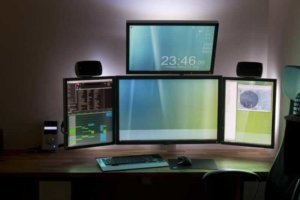 If you are a serious programmer then I recommend you to setup dual monitor screen, it will delivers you additional flexibility and increase efficiency.
If you are a serious programmer then I recommend you to setup dual monitor screen, it will delivers you additional flexibility and increase efficiency.
Dual Monitor setup is a need for an intensive programmer. With dual monitor setup, you can give a full monitor screen to the code and 2nd screen can be used for documentation and other tasks.
I explained in detail about Dual or 3 Monitor Screens at the bottom of this guide. You can jump to that section by clicking here.
Screen Size
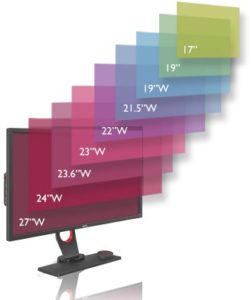 As the saying goes, the bigger the better. Is it really like that? Normally it is, but having a huge monitor has its disadvantages.
As the saying goes, the bigger the better. Is it really like that? Normally it is, but having a huge monitor has its disadvantages.
Not because of the size itself, but because the technology they use has not evolved to the pace of size. We still have to manage a high refresh rate (Hz), high resolutions and a good color calibration, but soon.
You could expect the next set of monitors to have a large size along with all the necessary functions in a programming monitor. But these great monitors also come with a great price. It is something that must think about.
The bigger the monitor, the bigger the price. The sweet spot for coding is 27 inches since they offer you enough screen space and all the features you need.
Dual Monitor Vs Wide Screen
The dual boost your productivity and save a lot of time, but due to monitor prices, you have to buy 2 or more monitors to set a multi-screen setup. If you are thinking about the Ultra-wide monitor that can be an alternative of multi-screen? So I will give your answer here.
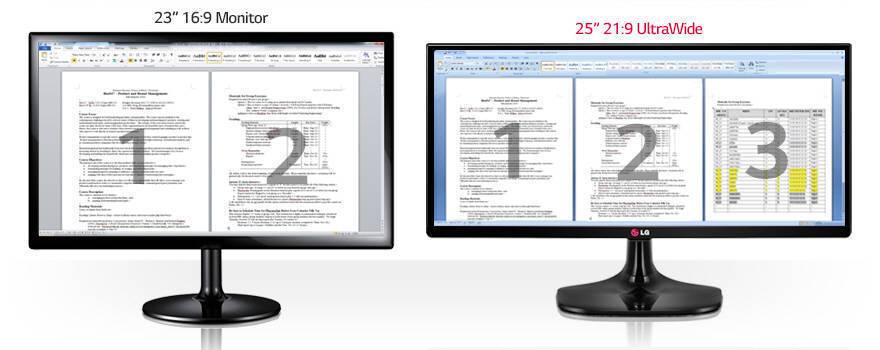
The dual-monitor & ultra-wide monitor have pros and cons, it is you who decide which have to choose.
As we know dual monitor improves focus, overcome mistakes, ergonomics and user pleasure, better visibility & switching between different programs smother. Research by Jon Peddie tells the multi-screen monitor to improve efficiency by up to 30%.
Now come to ultra-wide monitors, as you know its aspect ratio is 32:9 or more is equal to 16:9 of dual monitors.
The curved screen, 4k Resolution, and touch display also attract the buyer to pick the ultra-wide instead of setup dual monitor.
A big drawback is you can’t view multiple apps/ software in full-screen mode.
Type of Panel
There are different types of panel technology. TN, IPS, and VA panels. Each one has its pros and cons, so let's see them all see which one best suits your needs.
Wanna know which panel is best for gaming? read here.
-
TN panels
These are the ones that gamers usually choose. They do not have as good eye angles or colors as vibrant as the other two options, but they compensate with a lower price and higher refresh rates. These screens often have 120Hz or 144Hz and have a response time of 1 ms. If you play action titles, then you should watch these monitors. Because although they may not have the same ability to display colors as other panels, they reduce movement by refreshing the screen more often. These monitors have been in the market for quite some time, and that is why we can have ultra-fast refresh rates for a relatively low price.
-
IPS panels (Coder Picks this One)
These panels are the best possible for a professional Programmer. It offers the best color calibration and angles of view, something essential for anyone who needs the most accurate colors possible. But there are some disadvantages in these monitors. One is the price, and the other is the response time. For an average person, that does not really matter (well, the price itself). If you are not a regular at the action games, then it is better to opt for an IPS panel. This will give you the best possible viewing and the most accurate images.
-
VA panels
This type of panel tried to offer a compromise between TN panels and IPS. But it failed on both sides. It has a shorter response time than an IPS panel and less vibrant colors than a TN panel. What does highlight a VA panel is in the color contrast. This means that it shows darker colors better.
Bezels
The bezel is a word used to define the exterior frame of a computer monitor or any other computing device. The smaller bezel is fit for dual-monitor setup as there will be less of a gap between each monitor.
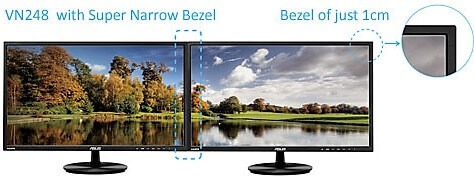
The thin bezel choices are ideal for gamers, graphics designers, and video editors and even for a software developer.
So if you planning to make a multi-screen setup in the future then pick the borderless monitor.
Resolution
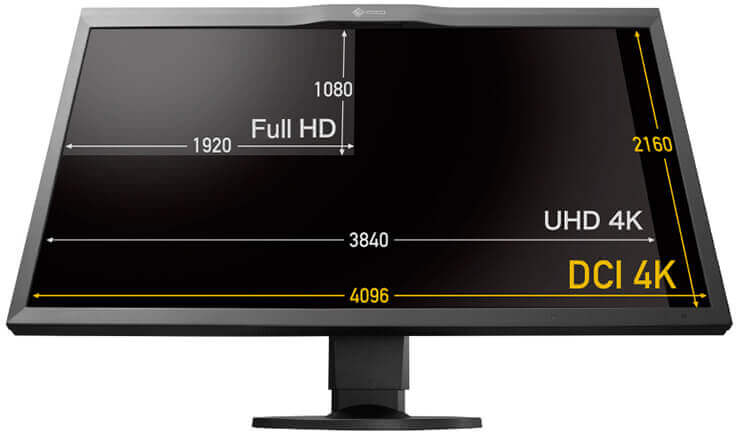 Again, many believe that the older, the better. But again, this can be deceptive.
Again, many believe that the older, the better. But again, this can be deceptive.
Many people also confuse the resolution with the screen size. And although they are similar, and often correlated, they are not the same at all.
The resolution is the number of pixels on a screen. A larger screen means that it can hold more pixels. But that is not always the case. A 17' Monitor can, and often have the same number of pixels as one of 21'.
You can not see anything extra in the 21'is simply that everything is slightly larger.
A higher resolution results in a greater number of pixels on the screen, which gives you more images with sharper details. So in general, a higher resolution is better. You may have a problem when you have programs encoded for different resolutions.
So, in general, a higher resolution means a sharper image, although smaller. If you do not have a 20/20 vision then you may prefer a lower resolution, so that the images are larger and easier to see.
Pixels Per Inch (PPI)
PPI stands for Pixels Per Inch and is a metric usually used to define the pixel compactness for all types of displays, including cameras, computers, mobile devices, etc
In simple word, when you combine the monitor size and the resolution you get PPI, you can calculate it here
I’m sharing few mostly use Pixel per inch”
- 13.3” @ 1080p = 165.63 PP
- 22” @ 1080p = 100.13 PPI
- 25” @ 1080p = 88.12 PPI
- 22” @ 1440p = 133.51 PPI
- 25” @ 1440p = 117.49 PPI
- 32” @ 1440p = 91.79 PPI
- 27” @ 4k = 163.18 PPI
- 36” @ 4k = 122.38 PPI
- 50” @ 4k = 88.12 PPI
The higher the PPI the more closely filled the pixels are and show you the sharper image and splendid text reading.
Monitor Orientation
Do you need a portrait or landscape programming monitor? Most monitors are oriented in landscape design, you should check the orientation of the monitor before picking it.
Most programmers prefer stable screen, but some want rotatable one, the rotatable screen helps the programmer when the code lines go long and can flip the monitor to a vertical position to do their work efficiently.
In the same way, if you want a dual-screen setup, then the rotatable monitor will optimize your positioning and angles.
The monitor footprint should also look and ensure it is not huge for your desk and can easily fit on the desk.
Stand & Flexibility
Each monitor has a stand. Most of the brackets that come with the monitor can adjust the angle, but the degree of adjustment may be different. You also need to make sure that you can adjust the height.
Fixed mounts are a bad choice for everyone. The most comfortable viewing angle can change for a variety of reasons, so you need something that can be easily adjusted for this.
Refresh Rate (The Higher is Better)
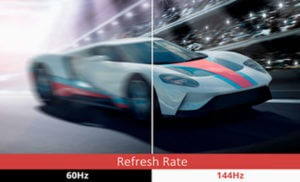 This is the frequency with which the screen redraws the image per second. It is measured in Hz (Hertz). A 144Hz screen redraws the image 144 times per second, and a 60Hz screen does 'only' 60 times per second.
This is the frequency with which the screen redraws the image per second. It is measured in Hz (Hertz). A 144Hz screen redraws the image 144 times per second, and a 60Hz screen does 'only' 60 times per second.
For Programming or Coding which refresh rate works better?
We have included the monitor with Refresh Rate (60-144 Hz), you can choose between them. If you want a monitor for coding plus gaming then go for 144Hz.
Frames Per Second (FPS)
There is a difference between the Refresh Rate & FPS. The refresh rate is how often the screen is refreshed, even though there are no changes to it. So the lowest number is the frequency with which the images change.
If you have a PC with enough power to run games above 60 FPS, then you should certainly look for a monitor that runs at more than 60 Hz.
The good thing about monitors is that they are a long-term investment. The graphics card is the most important part of your programming software, but a monitor is what it takes to show those graphics (Front End output).
So you must get a monitor that has 60Hz to 144 Hz, and so you can renew your graphics card without having to replace your monitor. Otherwise, you will be restricting your FPS to only 60 or below.
Response Time (The Lower is Good)
Input Lag
An input delay is a measure of the time between typing a command on the keyboard, mouse, or controller before being saved to the screen. Small input lag is very important in "twitch" (time-dependent) video games, which account for fractions of the second material.
The input offset is different from the response time. The latter is an indicator of the speed at which pixels can move from black to white on a particular monitor, or vice versa. The monitor manufacturer talks about the response time of "gray to gray" (GTG). The response time is not as long as the input delay, but response times above 5 ms can generate blurry or ghost images and affect gameplay. Therefore, if you have the option to reduce response time, if all other conditions are the same, you must adopt them.
Aspect Ratio
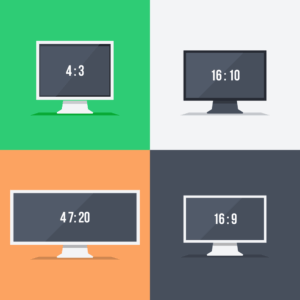 The aspect ratio is how images are sized on the screen. When you have a 16: 9 screen, the images are sized 16 'wide and 9' tall. If the aspect is 21: 9, then the images are 21 'wide and 9' high.
The aspect ratio is how images are sized on the screen. When you have a 16: 9 screen, the images are sized 16 'wide and 9' tall. If the aspect is 21: 9, then the images are 21 'wide and 9' high.
This aspect ratio usually works better with larger screens. The larger the screen, the greater the aspect ratio. Up to a certain point. 21: 9 is an almost cinematic format. Now is when we are having computer monitors capable of having an aspect ratio of 21: 9.
The best aspect ratio for a programming monitor is 16:9 and 21:9, the choice is yours which one you want to choose.
Viewing Angles
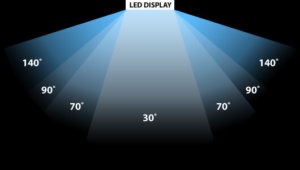
This is the number of angles in which you can observe the monitor without seeing any kind of distortion or strange colors. Each monitor has an angle designed to be seen. Normally it is in front, although some of them have angles where you should see the monitor slightly upwards. These monitors are designed to be used with a stand so that you can lean a little back in your chair.
In my opinion, it really is much more comfortable than seeing it directly. This is something personal.
Or if you use a lot of Ms. Visual Studio or more accurate and vibrant colors, do not miss an IPS panel. But remember that they are more expensive.
On the other side, you have TN. They tend to have a unique angle of vision and not so vibrant colors. If you observe the monitor from another point that is not in front you will have distortion with the colors. However, many people sit in front of their monitors so it should not be a problem.
If you find yourself assembling a home theater equipment, then you should see which monitor has the best angles. Those will always be IPS panels.
Monitor Scaling
First of all, scaling is not a problem that has been resolved. Scaling support is a patch at best, and many applications do not support it properly.
But more importantly, as things increase, screen space is lost.
The 4k monitor technically has four times the screen space of the 1080p monitor. This means that you can install a 1x1080p monitor in each box in the grid by drawing a large butt rectangle and splitting it into a 2x2 grid.
If you zoom the 4k monitor to 200%, it will have exactly the same screen space as the 1080p monitor. It looks a little smoother, like a Retina display, but you get nothing.
At a 150% scale, it has the same space as a 1440p monitor. In that case, it is recommended to buy a 1440p monitor. This is to provide much better specifications for the price, which is much cheaper.
Tips: How Many Monitors Screen should I connect for coding?
Single or One Monitor Screen
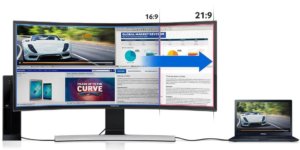 A screen was perfect to go on social networks, respond to emails, watch videos of cats on YouTube and incidentally, do the office. Most "lambda" users and non-IT professionals only need a screen.
A screen was perfect to go on social networks, respond to emails, watch videos of cats on YouTube and incidentally, do the office. Most "lambda" users and non-IT professionals only need a screen.
As long as you only need to do one thing at a time, staying on one program, one screen is enough. However, its size and technology can be important. A graphic designer, only needs a screen, certainly, but it must be relatively large and with accurate colors.
I have a laptop. I use it to go on the internet, watch my emails and work on the move. There is only one screen, but it is more than enough for this type of application.
Dual Monitor Screen
In computer science, there is an operation that is performed several hundred times a second. You have probably never heard of it, yet this operation is the basis of modern computing and is a chasm to performance: the change of context.
A computer can only perform a finite number of operations at any one time, but we humans do a lot of things at once and we are not very patient. The computer, therefore, spends most of its time moving from one context to another to do whatever it asks of it without giving the impression of "planting". No way, the change of context is very expensive in resource and time.
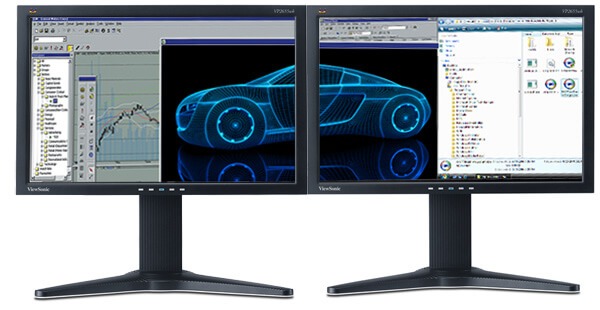
The relationship with the number of screens? None in theory, but if you apply the notion of context change to a human, it works exactly the same.
In the computer industry, especially in application development, you often need two things: a code editor and documentation. The same kind of situations occur with many other activities (coding, CAD, etc.), but this is particularly true in computer development.
A developer who works with a single screen is a developer who is wasting time passing from his code editor to the doc, then to the code editor, then back to the doc, and so on. Not only is it a waste of unnecessary time, but it is also counterproductive and a source of error. The keyboard shortcut that fairs and loosens a code file is a classic. Two screens are a vital minimum for a developer.
With two screens, one can have on one screen the documentation and on the other screen its code editor. Switching from one to the other then boils down to looking from one screen to another. We save time, we are more productive and we avoid a package of false manipulations.
Never two without three is well known (Best Monitor Setup for Programming)
Two screens are the minimum for a developer, but as we say: "never two without three".
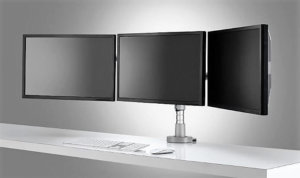 Having three screens is really, but then really, practical when you code. One can have the documentation on one side, its code editor in front and the result of the program or scripts on the other side.
Having three screens is really, but then really, practical when you code. One can have the documentation on one side, its code editor in front and the result of the program or scripts on the other side.
Once you've tasted a three-screen setup, going back to two screens is real torture.
- In embedded development, one will generally find the compilation/programming/ debug scripts on the third screen.
- In mobile development, one can easily imagine having the real-time preview of the interface simulator on the third screen.
- In web development, we will certainly have the web browser (in debug mode) on the third screen, not to mix debug tabs and documentation tabs.
You'll understand, three screens for a developer, it's the best.
Best Monitor for Programming FAQs
FAQs
What Monitors Do Developers Use?
Developers use a variety of monitors depending on their personal preferences, work requirements, and budget. Some popular monitors for developers include:
- Dell UltraSharp U2720Q: This 27-inch monitor has a 4K resolution and a 60Hz refresh rate. It is known for its accurate colors and high-quality build.
- LG 27UK850-W: This 27-inch monitor also has a 4K resolution and a 60Hz refresh rate. It has a USB-C port for easy connectivity and a built-in speaker.
- ASUS ProArt PA278QV: This 27-inch monitor has a 1440p resolution and a 75Hz refresh rate. It is known for its color accuracy and comes with a built-in shading hood.
- HP Z27: This 27-inch monitor has a 1440p resolution and a 60Hz refresh rate. It is known for its excellent color accuracy and is a popular choice among graphic designers and developers.
- Acer Predator X27: This 27-inch monitor has a 4K resolution and a 144Hz refresh rate. It is a popular choice among gamers but also works well for developers who want a high-end monitor with a fast refresh rate.
Overall, developers tend to prioritize monitors with high resolutions, accurate colors, and fast refresh rates, as these features can help improve productivity and reduce eye strain during long work sessions.
Is 27 Inch Monitor Enough For Coding?
Yes, a 27-inch monitor is typically enough for coding. It provides a comfortable amount of screen real estate for most developers, allowing them to easily view multiple windows, code editors, and other tools at once. However, the ideal monitor size can vary depending on personal preferences and the specific needs of the developer.
Some developers may prefer larger monitors with even more screen real estate, such as ultrawide or dual monitors, while others may find smaller monitors to be sufficient. Ultimately, the best monitor size for coding depends on factors such as the type of work being done, the available desk space, and the budget for the monitor. It is recommended to try out different monitor sizes before making a purchase to determine the best size for individual needs.
Which Type Of Monitor Is Best For Coding?
The best type of monitor for coding is one that provides a comfortable viewing experience, high resolution, and accurate colors. Here are some types of monitors that are commonly used by developers:
- IPS (In-Plane Switching) Monitors: These monitors have excellent color accuracy and wide viewing angles, making them a popular choice for coding. They also provide a good balance between price and performance.
- 4K Monitors: These monitors have a resolution of 3840x2160 pixels, which allows for an incredibly sharp image. They provide a lot of screen real estate, which is useful for coding but can be expensive.
- Ultrawide Monitors: These monitors have an aspect ratio of 21:9, which provides more horizontal screen space than a standard monitor. They are ideal for multitasking and can display multiple code editors, tools, and windows at once.
- Dual Monitors: Developers often use dual monitors to increase their productivity. With two monitors, they can have multiple code editors, tools, and windows open at once, which can help speed up their workflow.
- LED Monitors: These monitors are energy-efficient and have a longer lifespan than other types of monitors. They are also often more affordable than other types of monitors.
Ultimately, the best type of monitor for coding depends on personal preferences, work requirements, and budget. It is recommended to consider factors such as resolution, color accuracy, viewing angles, and screen size when choosing a monitor for coding.
How Do I Choose A Monitor For Coding?
When choosing a monitor for coding, there are several factors to consider to ensure that you get the best one for your needs. Here are some things to keep in mind:
- Resolution: A higher resolution monitor will provide more screen real estate and make it easier to see small details. Look for a monitor with at least a 1080p resolution, but consider a 1440p or 4K resolution if you have the budget.
- Size: The size of the monitor should be comfortable for you to work on. A 24-27 inch monitor is usually sufficient for most developers, but if you need more screen real estate, consider an ultrawide monitor or dual monitors.
- Panel type: Look for a monitor with an IPS panel, which provides wide viewing angles and accurate color reproduction. TN panels are more affordable but have narrower viewing angles and less accurate colors.
- Refresh rate: A higher refresh rate can reduce eye strain, especially during long coding sessions. Look for a monitor with a refresh rate of at least 60Hz.
- Connectivity: Make sure the monitor has the necessary ports for your computer and any peripherals you use.
- Price: Determine your budget before shopping for a monitor. Monitors can range from less than $100 to several thousand dollars, so set a budget that works for you.
- Reviews: Read reviews from other developers to get an idea of the monitor's performance and reliability.
Overall, the best monitor for coding is one that provides a comfortable and high-quality viewing experience while fitting within your budget. It's important to consider your personal preferences and work requirements to find the best monitor for you.
Is a Flat Or Curved Monitor Better For Coding?
Whether a flat or curved monitor is better for coding depends on personal preference. Some developers prefer flat monitors because they are more affordable and provide a consistent viewing experience. Flat monitors are also easier to find and come in a wider range of sizes and resolutions.
On the other hand, some developers prefer curved monitors because they provide a more immersive and comfortable viewing experience. Curved monitors can reduce eye strain by reducing reflections and providing a more natural viewing angle. They can also be more ergonomic, as they allow you to see more of the screen without having to turn your head.
Ultimately, whether a flat or curved monitor is better for coding depends on individual preferences and work requirements. It's recommended to try out both types of monitors to see which one is more comfortable and efficient for you.
Should I Get A 25 Or 27-Inch Monitor For Programming?
Whether you should get a 25 or 27-inch monitor for programming depends on your personal preference and work requirements. Both sizes have their advantages and disadvantages, so it's important to consider your needs before making a decision.
A 27-inch monitor provides more screen real estate, allowing you to view multiple code editors, tools, and windows at once. This can improve productivity and reduce the need for multiple monitors. However, a 27-inch monitor can also be more expensive and take up more desk space.
A 25-inch monitor is smaller and more affordable, but still provides a comfortable amount of screen real estate for most developers. It can also be more ergonomic and easier to use in a multi-monitor setup.
Ultimately, the decision between a 25 or 27-inch monitor for programming depends on factors such as personal preference, desk space, and budget. If you have the budget and desk space for a larger monitor, a 27-inch monitor can provide a more immersive and efficient coding experience. If you prefer a smaller and more affordable monitor or have limited desk space, a 25-inch monitor can still provide a comfortable viewing experience.
Do You Need 2 Monitors For Programming?
No, you do not need two monitors for programming, but it can be helpful for improving productivity and organization. With two monitors, you can have multiple code editors, tools, and windows open at once, allowing you to easily switch between tasks without having to constantly minimize and maximize windows.
Having two monitors can also reduce eye strain by allowing you to position your code editor on one monitor and your reference material on another. This can improve your workflow and reduce the need for constantly switching between tabs and windows.
However, having two monitors can be expensive and take up more desk space. It's important to consider your budget and workspace limitations before investing in a second monitor.
Overall, while two monitors can be helpful for programming, they are not necessary. Many developers can work efficiently with a single monitor, while others prefer using a laptop screen and an external monitor. It's important to consider your work habits and needs when deciding whether to use one or two monitors for programming.
Conclusion
Well, This was all about Best Monitor for Programming, I hope you like this detailed guide and reviews. Feel free to postyou feed backl in the section below.
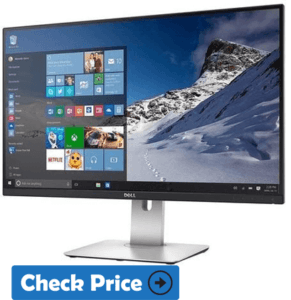
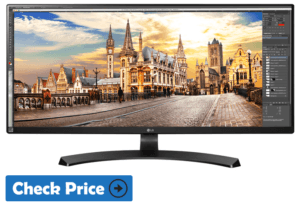
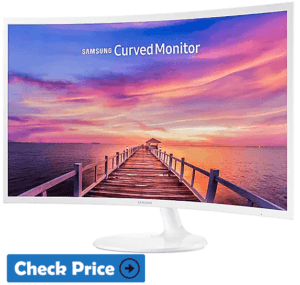
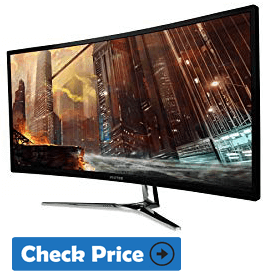
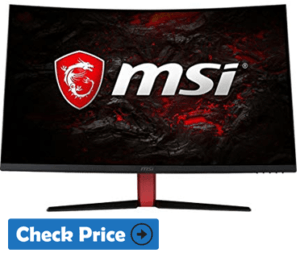
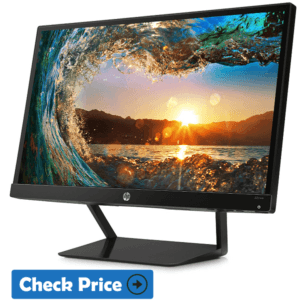
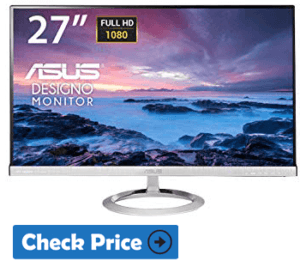
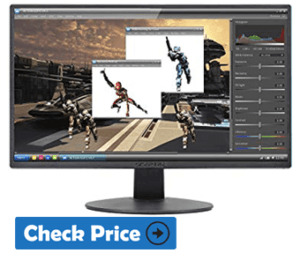
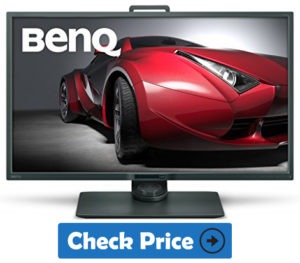
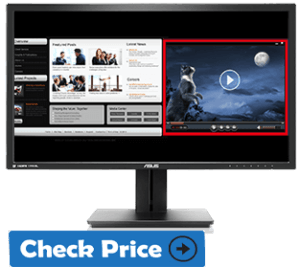



![Niacop P4 Controller, p4 controller with Macro Programming Function, Dual Vibration, Turbo 3-level adjustable, 3.5MM headphone jack etc., [2024 Latest Upgrade]](https://m.media-amazon.com/images/I/41D8Jtkp+tL._SL160_.jpg)

